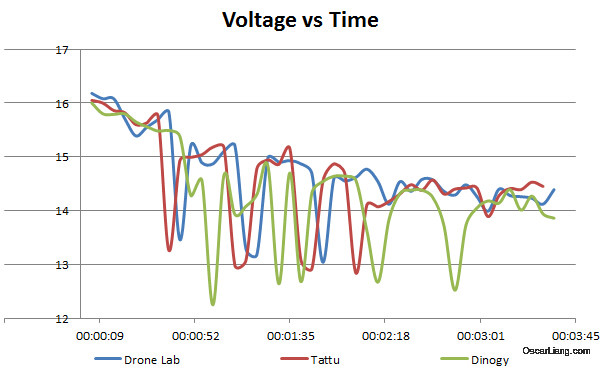3 kinds of Brand lipo batteries testing:Tattu,Dinogy,Drone Lab
Oct 2nd 2016
We are testing 2 new LiPo batteries for racing mini quad, the Tattu and Dinogy. We will also compare the performance against the Drone Labs in our flight test.
Some might say it's not fair or relevant to compare a 1550mah with a 1300mah. But I say it's totally relevant in this case. If someone was going to buy some lipo today, considering these batteries are all very similar size/weight/price, they are all good for a 210 or 180 mini quad. The Dinogy is only less than 10g lighter than the Drone Lab.
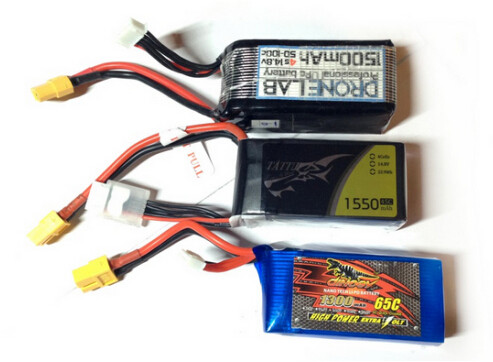
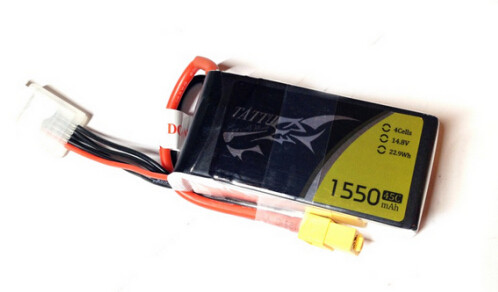 This is the heaviest battery of all three we are testing, probably due to the extra capacity and length of the discharging lead.
Tattu batteries have a very wide distribution, and the high availability makes Tattu one of the most used Lipo brand out there.
Price: $22.6
Weight: 178g
Size: 72mm x 36.5mm x 33.0mm
This is the heaviest battery of all three we are testing, probably due to the extra capacity and length of the discharging lead.
Tattu batteries have a very wide distribution, and the high availability makes Tattu one of the most used Lipo brand out there.
Price: $22.6
Weight: 178g
Size: 72mm x 36.5mm x 33.0mm
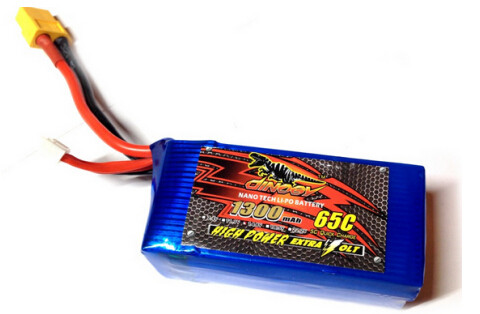 Thanks to FirstPersonView.co.uk for sending me the Dinogy LiPo for testing.
Light weight LiPo.
Price: $29
Weight: 150g
Size: 20 x 35 x 69mm
Thanks to FirstPersonView.co.uk for sending me the Dinogy LiPo for testing.
Light weight LiPo.
Price: $29
Weight: 150g
Size: 20 x 35 x 69mm
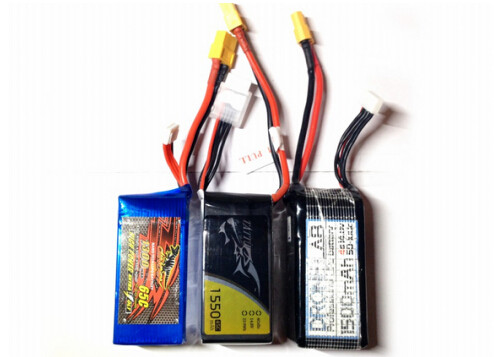 Price: $24
Weight: 157g
Size: 75 x 33 x 30mm
Price: $24
Weight: 157g
Size: 75 x 33 x 30mm

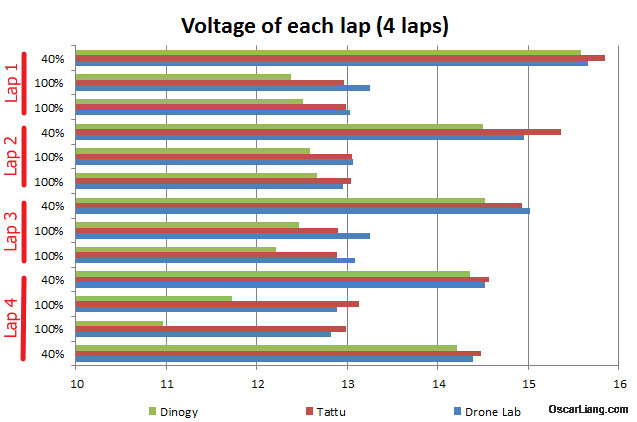
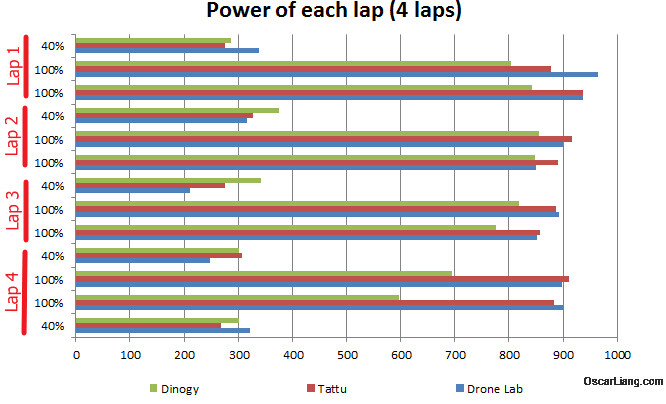
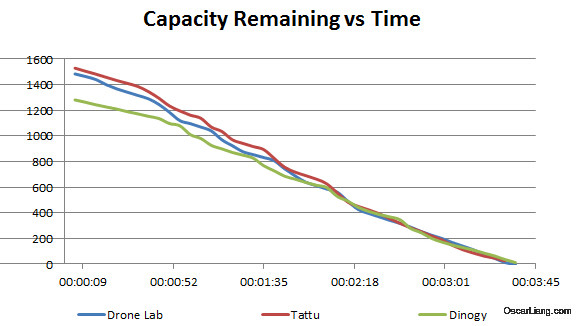

Tattu 4S 45C 1550mAh Lipo
Thanks to Gens Ace Tattu for sending me the Tattu Lipo for testing. This is the heaviest battery of all three we are testing, probably due to the extra capacity and length of the discharging lead.
Tattu batteries have a very wide distribution, and the high availability makes Tattu one of the most used Lipo brand out there.
Price: $22.6
Weight: 178g
Size: 72mm x 36.5mm x 33.0mm
This is the heaviest battery of all three we are testing, probably due to the extra capacity and length of the discharging lead.
Tattu batteries have a very wide distribution, and the high availability makes Tattu one of the most used Lipo brand out there.
Price: $22.6
Weight: 178g
Size: 72mm x 36.5mm x 33.0mm
Dinogy 4S 65C 1300mAh LiPo
 Thanks to FirstPersonView.co.uk for sending me the Dinogy LiPo for testing.
Light weight LiPo.
Price: $29
Weight: 150g
Size: 20 x 35 x 69mm
Thanks to FirstPersonView.co.uk for sending me the Dinogy LiPo for testing.
Light weight LiPo.
Price: $29
Weight: 150g
Size: 20 x 35 x 69mm
Drone Lab 4S 50C 1500mAh LiPo
I first reviewed and started using this LiPo back in 2015 and I was well impressed with the performance. Similar size to the Tattu, but significantly lighter, it's actually close to the Dinogy in terms of weight. It's also the cheapest of all 3 batteries. Price: $24
Weight: 157g
Size: 75 x 33 x 30mm
Price: $24
Weight: 157g
Size: 75 x 33 x 30mm
Result and Comparison
The test was carried out in this simple course, simulating what it's like in a real race. There are 2 parts of the course that requires 100% throttle to show the discharging performance of the LiPo, and the voltage and current are recorded (red stars). Right after these full throttle punch outs, there is a long slower pace cruise at 40% throttle, data is also recorded at the end of this straight line to see how well the battery voltage recovers. I flew at least 4 laps on each battery.
C Rating and Voltage Sag
One of the most important aspects when choosing Lipo battery, is to look at what the maximum discharge current is. If you discharge more current than the Lipo can handle, you will start to get voltage sag (big drop in voltage level). C rating is supposed to indicate the maximum discharge current: maximum discharge current = C-rating * battery Capacity However not every battery manufacturer/marketer tells the truth, it's not uncommon that C rating is over-stated. From the spec of the three batteries we are testing: Tattu: 1550mAh * 45C = 69.75A Dinogy: 1300mAh * 65C = 84.5A Drone Lab: 1500mAh * 50C = 75A My quadcopter draws about 70A to 75A of current at full throttle, and from this calculation, I would expect to see the Dinogy battery to have the least voltage sag, but quite the opposite in my testing. voltage sag is the worse in all 4 laps, and it got worse toward the 4th lap. On the other hand, Tattu and Drone Lab performed similarly better in the test.
Power of Batteries
Another useful chart to look at is the power. If the Lipo can provide more power at each punch out consistently, your quad can reactive more quickly and out-race other quads. It's a key factor to win a tight race :) I really can't tell which is better between Tattu and Drone Lab, they both have very close performance. The output power is very consistent through out the race in all 4 laps. However, the Dinogy didn't do that well right from the beginning, and the power it provides also seemed to diminish toward the end.
Time Charts
I also plotted some more graphs of this test. The data is plotted every 5 seconds during the flights. Hopefully these charts can give you a better understanding of these batteries performance. The interesting thing is that these batteries had close flight time (if I land when they reached their specified capacity). But note that when the Tattu and Drone Lab used up their specified capacity (1550mAh and 1500mAh), their votlages are still well above 14V, which means you can probably fly a bit longer (I normally land at 13.5V). Maybe they are slightly larger packs than specified by the package

